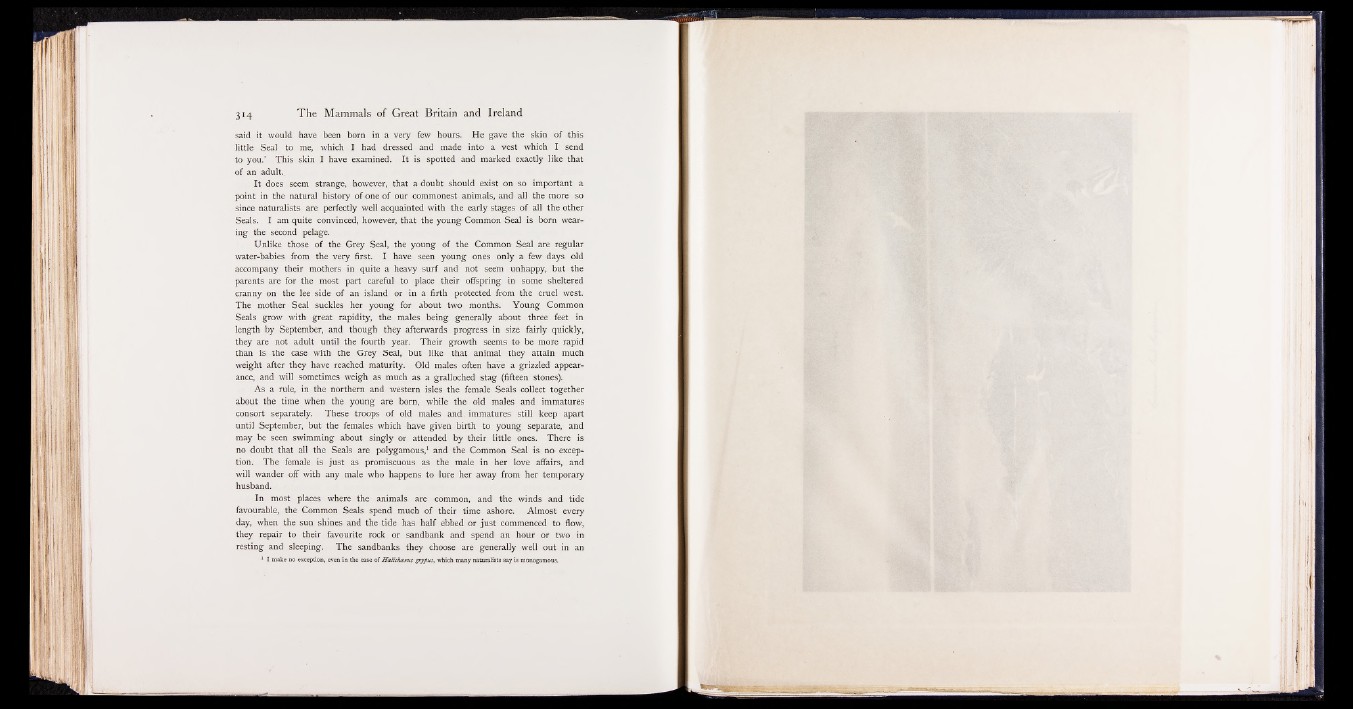
said it would have been born in a very few hours. He gave the skin of this
little Seal to me, which I had dressed and made into a vest which I send
to you.’ This skin I have examined. It is spotted and marked exactly like that
of an adult..
It does seem strange, however, that a doubt should exist on so important a
point in the natural history of one of our commonest animals, and all the more so
since naturalists are perfectly well acquainted with the early stages of all the other
Seals. I am quite convinced, however, that the young Common Seal is born wearing
the second pelage.
Unlike those of the Grey Seal, the young of the Common Seal are regular
water-babies from the very first. I have seen young ones only a few days old
accompany their mothers in quite a heavy surf and not seem unhappy, but the
parents are for the most part careful to place their offspring in some sheltered
cranny on the lee side of an island or in a firth protected from the cruel west.
The mother Seal suckles her young for about two months. Young Common
Seals grow with great rapidity, the males being generally about three feet in
length by September, and though they afterwards progress in size fairly quickly,
they are not adult until the fourth year. Their growth seems to be more rapid
than is the case with the Grey Seal, but like that animal they attain much
weight after they have reached maturity. Old males often have a grizzled appearance,
and will sometimes weigh as much as a gralloched stag (fifteen stones).
As a rule, in the northern and western isles the female Seals collect together
about the time when the young are born, while the old males and immatures
consort separately. These troops of old males and. immatures still keep apart
until September, but the females which have given birth to young separate, and
may be seen swimming about singly or attended by their little ones. There is
no doubt that all the Seals are polygamous,1 and the Common Seal is no exception.
The female is just as promiscuous as the male in her love affairs, and
will wander off with any male who happens to lure her away from her temporary
husband.
In most places where the animals are common, and the winds and tide
favourable, the Common Seals spend much of their time ashore. Almost every
day, when the sun shines and the tide has half ebbed or just commenced to flow,
they repair to their favourite rock or sandbank and spend an hour or two in
resting and sleeping. The sandbanks they choose are generally well out in an
1 I make no exception, even in the case of Halicharus grypus, which many naturalists say is monogamous.